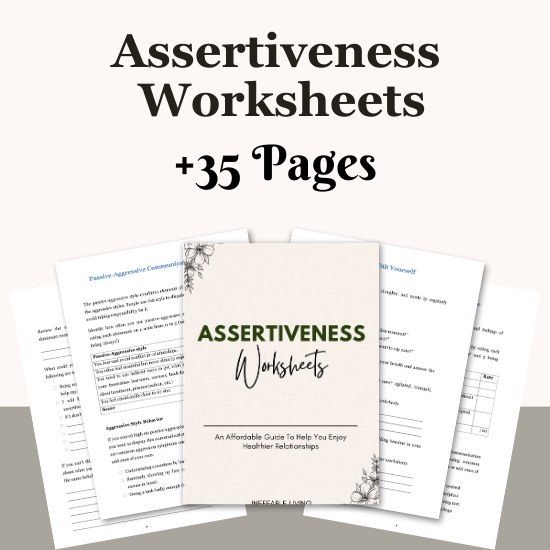In this post, you’re going to learn how to set boundaries with in laws.
Why Set Boundaries with In Laws?
Setting boundaries with in-laws is an essential aspect of maintaining healthy relationships, not only within your marriage or partnership but also with the extended family.
These boundaries help define the limits of acceptable behavior, ensure mutual respect, and protect the privacy and autonomy of your nuclear family.
Below are key reasons why setting boundaries with in-laws is crucial:
1. Preservation of Your Relationship
Boundaries help safeguard the primary relationship from external pressures or interference.
They ensure that the couple can make decisions independently, fostering a stronger bond and mutual respect without undue influence from family members.
2. Respect for Individual and Couple Autonomy
Establishing clear boundaries is a declaration of autonomy.
It signals that while in-laws are important, the couple functions as an independent unit with its own rules, values, and decisions.
This autonomy is vital for the couple’s growth and the development of their unique family culture.
Related: How To Deal With A Narcissistic Mother-In-Law?
3. Prevention of Conflicts
Conflicts often arise from unspoken expectations or overstepping boundaries.
By clearly defining these boundaries early on, you can significantly reduce misunderstandings and conflicts, ensuring smoother relationships within the family.
4. Protection of Privacy
Privacy is fundamental in any relationship. Boundaries help protect the couple’s privacy, ensuring that in-laws understand the limits of their involvement in the couple’s personal matters, including parenting decisions, financial matters, and lifestyle choices.
5. Stress Reduction
In-law relationships can sometimes be a source of stress, particularly if there are differing opinions on important matters.
Setting boundaries can help manage these differences by establishing clear limits, reducing the potential for stress and tension within the family.
Related: Top 25 Tips On How To Set Boundaries Without Being Controlling? (+FREE Worksheets PDF)
6. Maintaining Healthy Relationships
Boundaries are not about creating distance but about maintaining healthy, respectful relationships.
They help ensure that interactions with in-laws are positive and constructive, reducing the chances of resentment building up over time.
7. Preparation for Parenthood
For couples planning to have children, establishing boundaries with in-laws is crucial in setting up parenting roles and expectations.
This ensures that the couple’s parenting choices are respected and that in-laws understand their role in their grandchildren’s lives.
Related: Top 19 Journal Prompts For Boundaries
How to Set Boundaries With In Laws?
Setting boundaries with in-laws is a delicate process that involves clear communication, mutual respect, and consistency.
1. Recognize the Importance of Boundaries
Understand that boundaries are crucial for the health of your relationship and personal well-being.
They help in managing expectations and fostering respect among all parties involved.
2. Identify Specific Issues
Reflect on past interactions to identify specific areas where boundaries are needed.
Common issues include unsolicited advice, unexpected visits, or over-involvement in personal decisions.
Related: Top 10 Signs You Have Rigid Boundaries
3. Discuss with Your Partner
Your partner plays a critical role in setting boundaries with their parents.
Discuss your concerns openly and decide on boundaries together to present a united front.
4. Choose the Right Time and Place
Initiate the conversation at a time and place where everyone feels comfortable and relaxed.
Avoid times of conflict or stress.
5. Use “I” Statements
When expressing your needs, use “I” statements to communicate how certain behaviors affect you.
This approach minimizes defensiveness and focuses on your feelings rather than blaming.
Related: Healthy Boundaries Quiz (+Free PDF Worksheets)
6. Be Clear and Specific
Clearly articulate the boundaries you wish to set.
Be specific about what is acceptable and what isn’t, using concrete examples when possible.
7. Emphasize the Positive
Frame the conversation around the desire to build a healthy, respectful relationship with them.
Highlight how the boundaries will benefit everyone involved.
8. Start Small
Begin with smaller, more manageable boundaries to ease the transition.
Gradually address more significant issues as everyone adjusts to the new dynamics.
Related: What Do Boundaries Sound Like? + 35 Boundaries Examples
9. Consistency is Key
Consistently uphold the boundaries you’ve set.
Inconsistencies can create confusion and undermine your efforts.
10. Support Each Other
Stand by each other in enforcing boundaries.
Support from your partner is crucial, especially when setting boundaries with their parents.
11. Be Prepared for Resistance
Resistance is a common initial reaction.
Stay calm and reiterate your needs while being open to dialogue.
12. Reinforce Positively
When your in-laws respect your boundaries, acknowledge and thank them for their understanding and respect.
13. Address Violations Immediately
If a boundary is crossed, address it promptly and calmly, reinforcing the importance of that limit.
14. Adapt as Needed
Life changes, and so might your boundary needs. Be open to adjusting boundaries as your family dynamics evolve.
Related: +100 Examples of Boundary Violations & How to Deal With It

How to Reinforce Boundaries With In-Laws When Pushed?
Setting boundaries with in-laws is one thing—but reinforcing them when they’re tested is where the real challenge begins. Whether it’s uninvited advice, overstepping visits, or emotional pressure, in-laws can sometimes push limits without realizing (or sometimes knowingly). Reinforcing your boundaries firmly and respectfully protects your marriage, your household, and your emotional well-being.
1. Understand That Boundaries Are for You, Not to Control Them
Boundaries aren’t about changing or controlling your in-laws’ behavior—they’re about defining what you will and won’t allow in your space. You can’t control their reactions, but you can control how you uphold your limits.
2. Stay Calm and Consistent, Even When They Push Back
When boundaries are tested, emotions can rise fast. Stay steady and calm. A firm, quiet repetition of your limit (“We can’t host unplanned visits, but we’d love to schedule something”) reinforces it far better than emotional escalation.
3. Use Clear, Direct Communication—Not Hints or Sarcasm
Avoid passive-aggressive remarks or hoping they “get the message.” State your boundaries clearly and kindly: “We need some time alone right now, but we’ll check in with you on Sunday.”
4. Stand United With Your Partner
It’s essential that you and your spouse are on the same page. Discuss your boundaries privately first so you can present a united front. Mixed signals between you create confusion and invite further pushback.
5. Repeat the Boundary Without Over-Explaining
When boundaries are challenged, it’s tempting to keep explaining or justifying. Instead, calmly restate your limit: “I understand you’re upset, but this is the decision we’ve made.” Avoid getting trapped in endless debate.
6. Don’t Back Down Out of Guilt or Pressure
In-laws may use guilt (“We’re just trying to help!”) or emotional appeals to override your boundary. Remember: guilt is not a signal you’re doing something wrong—it’s often a sign you’re doing something new and healthy.
7. Set Natural Consequences (If Needed)
If boundaries continue to be ignored, calmly follow through on a consequence. For example, if they keep dropping by uninvited, you might stop answering the door. Quietly enforcing consequences shows that your limits are real.
8. Use Respectful but Firm Body Language
Your words matter, but so does your tone and posture. Speak firmly, make eye contact, and avoid nervous laughing or apologizing for your needs. Confidence reinforces the message.
9. Focus on What You’re Protecting, Not What You’re “Blocking”
Remind yourself: you’re not rejecting your in-laws—you’re protecting your marriage, your home, and your peace. Framing it this way helps you stay centered and grounded in the bigger picture.
10. Be Prepared to Revisit and Adjust Boundaries Over Time
Family dynamics shift. Sometimes, you’ll need to reinforce the same boundary repeatedly; other times, you may need to adjust based on changes in life. Stay flexible, but never at the cost of your core needs.
Reinforcing boundaries with in-laws isn’t about creating distance—it’s about creating respect and stability.
When you hold your limits with kindness and consistency, you protect your relationships and create space for healthier, more peaceful family connections.
Conclusion
Remind yourselves that the primary goal is to protect and strengthen your marriage.
Boundaries are not about creating conflict but about ensuring the health and longevity of your relationship.



